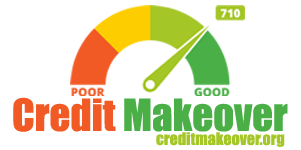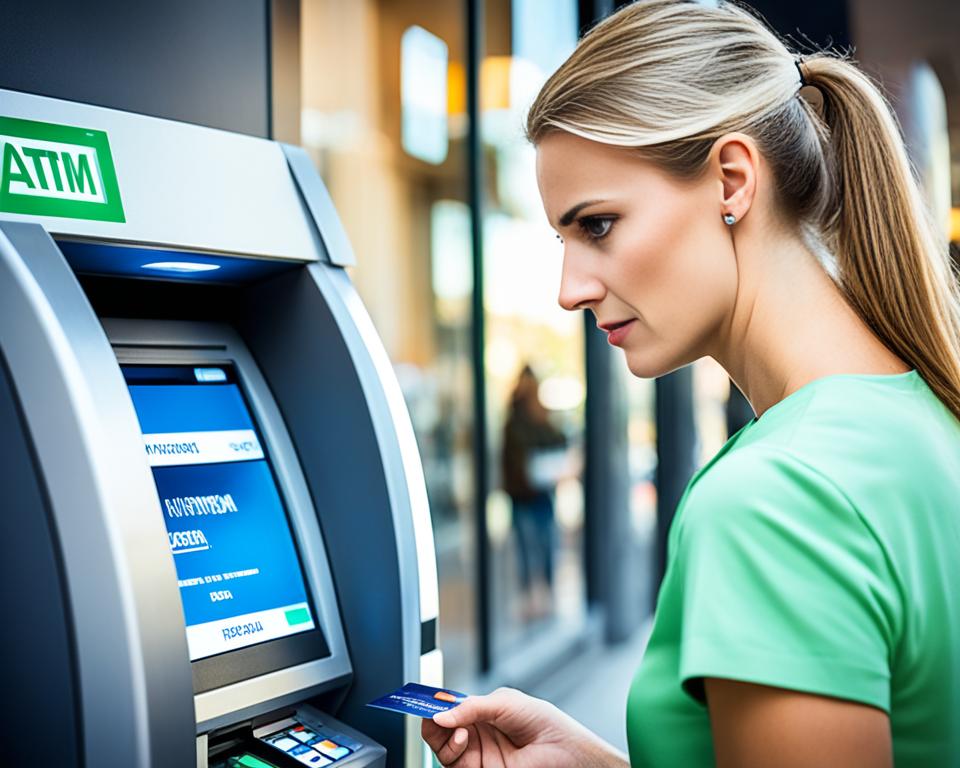Are you wondering if you can use your credit card at an ATM? We’ve got you covered. While credit card lenders do offer the option to withdraw cash through a cash advance, there are some drawbacks and hefty fees associated with it. Let’s explore whether using credit cards at ATMs is a smart financial move or not.
Key Takeaways:
- Most credit card lenders allow cash withdrawals at ATMs through a cash advance, but it comes with high fees.
- Withdrawing cash from an ATM using a credit card shows up as a charge on the card instead of drawing from a bank account.
- Forbes Advisor does not recommend using credit cards for cash advances.
Can You Use a Credit Card at an ATM?
Yes, you can use a credit card at an ATM to withdraw cash. This convenient feature, known as a cash advance, allows cardholders to access funds when needed. However, it’s important to note that utilizing this option comes with certain considerations and implications.
Using credit cards at ATMs offers cash access with added flexibility, but it’s crucial to be aware of the potential drawbacks.
Understanding Cash Advances
When you use your credit card at an ATM for a cash advance, the transaction functions differently from a regular purchase. Instead of deducting funds from your bank account, the cash advance amount is charged directly to your credit card, similar to a loan. This means you’ll be borrowing money from your card’s available credit limit, subject to fees and interest.
Discover the ins and outs of credit card ATM usage and the nuances of cash advances.
Risks and Considerations
While cash advances can provide immediate access to funds, it’s important to carefully weigh the associated risks. Compared to regular credit card purchases, cash advances often have higher interest rates and additional fees. The interest on cash advances starts accruing immediately, meaning there is no grace period as with typical transactions.
“Using a credit card at an ATM can be tempting in certain situations, but it’s crucial to understand the potential financial implications.”
In addition to higher interest rates, cardholders typically incur one-time fees for cash advances, which can be calculated either as a percentage of the withdrawn amount or as a fixed amount. These fees can add up quickly, so it’s important to consider the overall cost before opting for a cash advance.
Explore the potential drawbacks and financial implications of credit card ATM usage to make informed decisions.
Alternative Options
Before resorting to a cash advance, consider exploring alternative options. Debit cards provide convenient access to cash at ATMs without incurring the same fees and interest rates as credit card cash advances. Payment apps like Venmo or Cash App also offer options to transfer money using a credit card, albeit with small fees. Additionally, individuals can seek out personal loans, borrow from trusted friends or family, or explore other avenues before relying on cash advances.
The Bottom Line
While credit cards can be used at ATMs for cash advances, this option should generally be considered a last resort due to the associated fees and high interest rates. It’s advisable to explore alternative avenues first and to repay cash advances promptly to avoid accumulating unnecessary debt.
What Is a Cash Advance?
A cash advance is when a cardholder withdraws money from an ATM using a credit card. This amount is added to the cardholder’s account balance and will be reflected in monthly statements. Cash advances often come with one-time fees, high interest rates, and should only be used as a last resort or in emergencies.

When cardholders find themselves in need of immediate cash, they may consider using their credit card for a cash advance. This convenient option allows them to access funds directly from their credit card at an ATM. However, it is important to understand the implications of cash advances before proceeding.
A cash advance is essentially a short-term loan provided by the credit card company. The cardholder can withdraw a certain amount of cash, up to their credit limit, and the borrowed amount is added to their outstanding balance. Similar to any loan, cash advances come with associated fees and interest rates.
“Cash advances often come with one-time fees, high interest rates, and should only be used as a last resort or in emergencies.”
The fees for cash advances can vary, but they typically involve a one-time fee charged by the credit card issuer. This fee can be a percentage of the total amount withdrawn or a fixed amount, whichever is greater. It is important to carefully review the terms and conditions of the credit card to understand the specific fee structure for cash advances.
Furthermore, cash advances usually have higher interest rates compared to regular credit card purchases. Unlike regular purchases, which often come with a grace period of interest-free repayment, interest on cash advances starts accruing immediately. This means that cardholders will be charged interest on the borrowed amount from the day they make the cash advance.
“Cash advances often come with one-time fees, high interest rates, and should only be used as a last resort or in emergencies.”
Given the additional fees and high-interest rates associated with cash advances, they should only be used as a last resort or in emergencies. It is important to consider alternative options, such as using a debit card, seeking a personal loan, or borrowing money from friends or family, before opting for a cash advance.
Having a clear understanding of the implications of cash advances can help cardholders make informed decisions and avoid unnecessary fees and debt. It is advisable to carefully review the credit card terms and consult with the credit card issuer to fully understand the specific details and ramifications of cash advances.
Things to Consider Before Taking a Cash Advance
Before considering a credit card cash advance, cardholders should evaluate a few important factors. The decision to take a cash advance can have financial consequences, and it’s crucial to be well-informed.
High Interest Rates
One of the significant aspects to consider is the high interest rates associated with cash advances. Unlike regular credit card purchases that may have a grace period for interest charges, interest on cash advances typically starts accruing immediately.
One-time Fees
Additionally, cash advances often come with one-time fees for each withdrawal. These fees can vary based on the credit card company’s terms and conditions. It’s essential to carefully review the fee structure to understand the cost implications before deciding to take a cash advance.
To illustrate the potential impact of these fees and high interest rates, consider the following scenario:
| Transaction | Amount | Fee | APR |
|---|---|---|---|
| Cash Advance | $500 | $20 | 25% |
Using the above example, let’s assume the total repayment period for the cash advance is one month.
The total cost of the cash advance would be $520, including the one-time fee. Additionally, the interest accrued at a 25% APR would be $10.42. Therefore, the cardholder would need to repay $530.42 within one month to avoid further interest charges.
Considering the fees and interest rates, it’s crucial for cardholders to carefully weigh the necessity of a cash advance and explore alternative options first. Taking on additional debt may not be the most financially prudent choice.
To illustrate the potential financial implications, here’s what financial expert John Smith advises:
“While cash advances can provide immediate funds, the high interest rates and one-time fees associated with them can quickly add up. It’s important to carefully consider whether a cash advance is necessary or if alternative financial solutions can be explored.”
In conclusion, it is important for cardholders to thoroughly understand the high interest rates and one-time fees associated with cash advances. Taking a credit card cash advance should be a last resort and only used in situations of genuine financial need. Exploring alternative options and paying off cash advances promptly will help prevent unnecessary debt and ensure financial stability.
High Interest Rates
When considering a credit card cash advance, it is crucial to understand the impact of high interest rates. Unlike regular purchases made with a credit card, cash advances typically incur higher interest rates. This means that borrowing money through a cash advance can result in accumulating significant debt if not managed properly.
Most credit card companies do not offer a grace period for cash advances, meaning that interest begins to accrue from the day the cash advance is made. Unlike regular purchases, which often have a grace period of up to 30 days before interest is charged, cash advances start accumulating interest immediately.
It is important for cardholders to be aware of these high interest rates and take steps to minimize their impact on their financial situation. By paying off cash advances as quickly as possible, cardholders can avoid accruing excessive interest charges and prevent the debt from spiraling out of control.
Here is a comparison of average interest rates for cash advances and regular purchases:
| Transaction Type | Average Interest Rate |
|---|---|
| Cash Advances | 22.99% – 29.99% APR |
| Regular Purchases | 15.99% – 21.99% APR |
As the table above illustrates, cash advances generally come with significantly higher interest rates compared to regular purchases. This highlights the importance of understanding the financial implications before opting for a credit card cash advance.
Remember, it is always advisable to explore other alternatives, such as personal loans or borrowing from friends or family, before resorting to a cash advance. By carefully considering the high interest rates associated with cash advances, cardholders can make informed decisions to protect their financial well-being.
One-time Cash Advance Fees
When using a credit card for a cash advance, cardholders should be aware of the one-time fees imposed by the credit card company. These fees are charged for each cash advance withdrawal and can vary depending on the credit card issuer. Cardholders should carefully review the terms and conditions of their credit card to understand the specific fee structure for cash advances.
Credit card companies typically charge a fee that is either a percentage of the total amount withdrawn or a fixed amount, whichever is greater. The exact fee will be specified in the cardholder agreement or the credit card’s terms and conditions.
It’s important for cardholders to consider these one-time cash advance fees before opting for a cash advance. While it may be convenient to withdraw cash using a credit card, the fees associated with cash advances can add up quickly, making this option more expensive than other alternatives.
Negative Effects on Credit Scores
Taking out cash advances can have detrimental effects on an individual’s credit scores. When a cardholder utilizes a credit card for a cash advance, it lowers the available credit limit on the card, which can negatively impact their credit utilization rate. This reduction in available credit can lead to a decrease in the cardholder’s credit score.
Additionally, lenders may view cardholders who have a reduced available credit as a credit risk. This perception can make it more challenging for individuals to obtain credit in the future or may result in higher interest rates and fees for new credit applications.
It is crucial to understand the potential consequences of cash advances on credit scores before opting for this financial option.
“Taking out a cash advance on a credit card can have long-lasting effects on your credit. It’s important to consider alternative options and carefully evaluate the potential impact on your creditworthiness before making a decision.” – Financial Expert
Impact on Available Credit
When a cardholder takes a cash advance, it reduces the available credit on their credit card. For example, if the credit limit is $5,000 and the cardholder takes a cash advance of $1,000, their available credit will decrease to $4,000. This reduction in available credit can have a negative impact on credit scores because it increases the overall credit utilization rate.
The Role of Credit Utilization
Credit utilization refers to the percentage of available credit a cardholder is using at any given time. This ratio plays a crucial role in determining credit scores. High credit utilization rates can indicate an increased risk of not being able to manage debt and can negatively affect credit scores.
The Importance of Credit Scores
Credit scores play a significant role in an individual’s financial well-being. They are used by lenders, landlords, and insurance companies to assess creditworthiness and determine interest rates, loan eligibility, rental approvals, and insurance premiums. It is vital to maintain good credit scores to have access to favorable financial opportunities.
Minimizing the Impact
To minimize the negative impact of cash advances on credit scores, it is advisable to pay off the cash advance amount as soon as possible. By doing so, the available credit limit will increase, and the credit utilization rate will decrease. This proactive approach can help mitigate potential credit score damage caused by cash advances.
| Positive Actions to Minimize Credit Score Impact | Negative Actions that Can Affect Credit Scores |
|---|---|
| Pay off cash advances promptly | Carry high credit card balances |
| Monitor credit utilization rate | Miss or delay credit card payments |
| Regularly review credit reports for accuracy | Frequently apply for new credit |
| Keep credit card accounts open and active | Default on loans |
By adopting responsible credit management practices, including prompt repayment of cash advances and maintaining a low credit utilization rate, individuals can preserve and improve their credit scores.
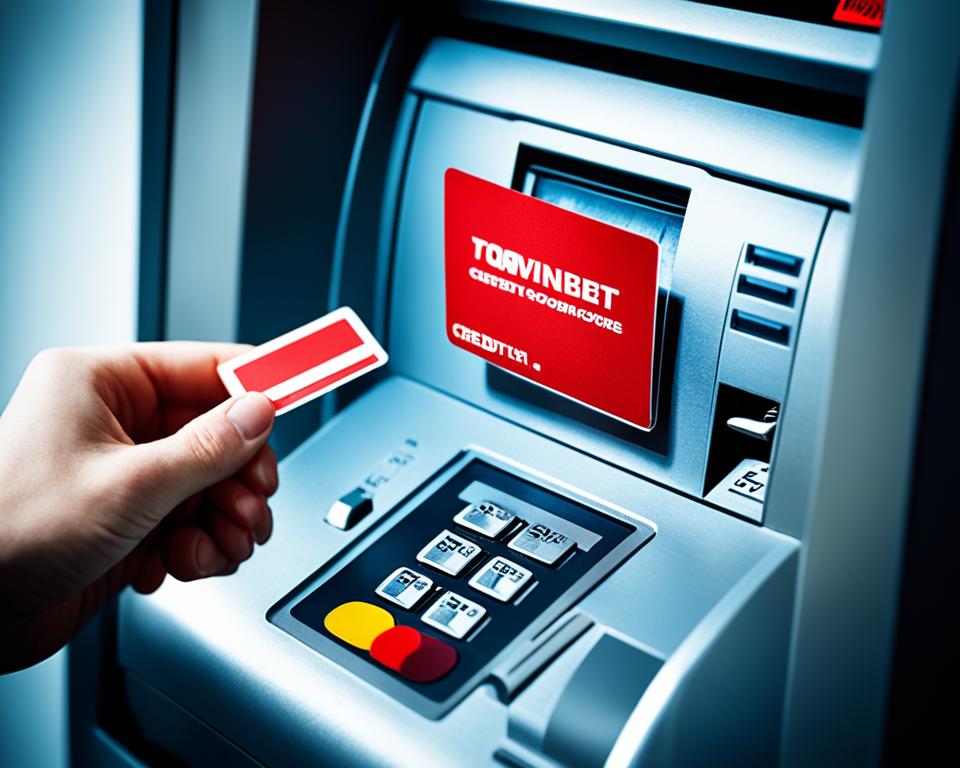
How to Get a Cash Advance on a Credit Card
Obtaining a cash advance on a credit card is a straightforward process. Cardholders can easily withdraw money from an ATM using their credit card. Here’s a step-by-step guide on how to get a cash advance:
- Insert your credit card into the ATM.
- Enter your personal identification number (PIN).
- Select the cash withdrawal option.
- Enter the amount of money you want to withdraw.
- Complete the transaction.
By following these simple steps, you can access the funds you need through a cash advance on your credit card.
| Step | Description |
|---|---|
| 1 | Insert your credit card into the ATM. |
| 2 | Enter your personal identification number (PIN). |
| 3 | Select the cash withdrawal option. |
| 4 | Enter the amount of money you want to withdraw. |
| 5 | Complete the transaction. |
“Using a credit card for a cash advance is as easy as inserting the card, entering the PIN, selecting the cash withdrawal option, specifying the desired amount, and completing the transaction.”
Withdrawing cash from an ATM using a credit card can be a convenient solution when you need immediate funds. However, it is important to keep in mind the related fees and interest rates for cash advances. Consider exploring alternative options and using cash advances sparingly to minimize potential financial implications.
Alternatives to Cash Advances
While cash advances can be a convenient option in certain situations, there are alternative methods that cardholders can consider before resorting to a cash advance. By exploring these alternatives, individuals can potentially save on fees and avoid the high interest rates associated with cash advances.
1. Debit Card Withdrawals
One alternative to cash advances is using a debit card to withdraw cash from an ATM. Unlike cash advances, debit card withdrawals typically do not incur any fees. By using a debit card linked to their bank account, cardholders can access the funds they need without incurring additional costs.
2. Payment Apps
Another alternative is to utilize popular payment apps like Venmo or Cash App. While these apps usually charge a small fee for credit card transfers, the fees are often lower than the fees associated with cash advances. By transferring funds from their credit card to their bank account through these apps, cardholders can get the cash they need at a reduced cost.
3. Personal Loans
If individuals require a larger sum of money, they can consider applying for a personal loan. Personal loans often come with lower interest rates compared to cash advances, making them a more affordable option. Many financial institutions offer personal loans with flexible repayment terms, allowing borrowers to meet their financial needs without paying excessive fees.
4. Borrowing from Friends or Family
Instead of taking a cash advance, cardholders can also consider borrowing money from friends or family members. While this option may not be available to everyone, it can be a viable alternative for those who have a support network in place. Borrowing money from loved ones can help individuals avoid the high fees and interest rates associated with cash advances.
By considering these alternatives, cardholders can make informed decisions regarding their financial needs without resorting to cash advances. Each alternative offers its own advantages and drawbacks, so it’s important for individuals to assess their unique circumstances and choose the option that best suits their needs.
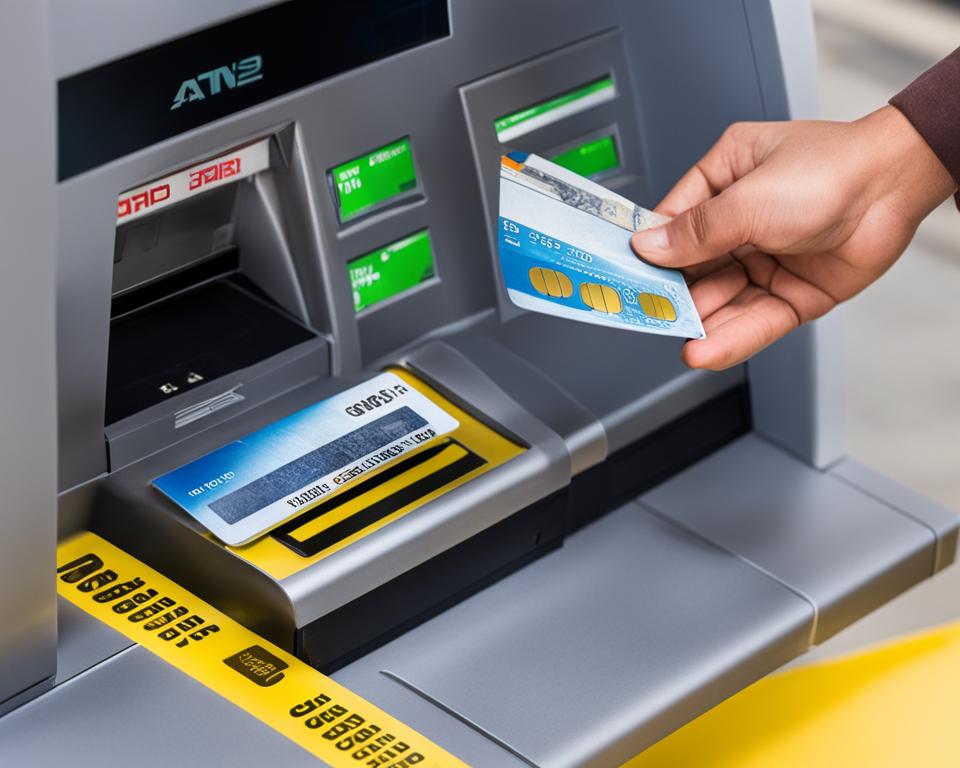
Remember, it’s always a good idea to speak with a financial advisor or consult with your bank or credit union for personalized advice and guidance.
Bottom Line
Cash advances should be considered a last resort when it comes to managing your finances. While it may be tempting to use your credit card for a quick cash infusion, it’s important to understand the potential drawbacks and alternatives available. The high fees and interest rates associated with credit card cash advances can quickly lead to mounting debt if not managed properly.
Before considering a credit card cash advance, it’s crucial to explore alternative options:
- Consider using a debit card to withdraw cash from an ATM with no fees.
- Payment apps like Venmo and Cash App also offer the option to transfer money from your credit card for a small fee.
- If you’re in need of a larger sum of money, applying for a personal loan may offer better terms and interest rates compared to a cash advance.
- Lastly, reaching out to friends or family members for a loan can provide a more affordable and flexible solution.
By considering these alternatives, you can avoid the high fees and interest rates associated with credit card cash advances and make a more informed financial decision.
Remember, managing your finances responsibly and avoiding unnecessary debt is the key to achieving long-term financial stability.
How Can I Get Cash from a Credit Card Without Charges?
When it comes to getting cash from a credit card without incurring fees, there are a few strategies you can employ. The best approach is to find a credit card that offers no cash advance fees, and take advantage of that feature. By choosing a card that doesn’t charge fees for cash advances, you can avoid the extra costs associated with accessing cash.
Once you have found a suitable credit card, it’s important to pay off the cash advance transaction on the same day. By doing so, you can minimize the interest fees that may still apply. Paying down the cash advance balance quickly helps avoid accumulating unnecessary interest charges and ensures a smoother financial experience.
| Strategies to Get Cash from a Credit Card Without Charges |
|---|
| Find a credit card with no cash advance fees. |
| Pay off the cash advance transaction on the same day. |
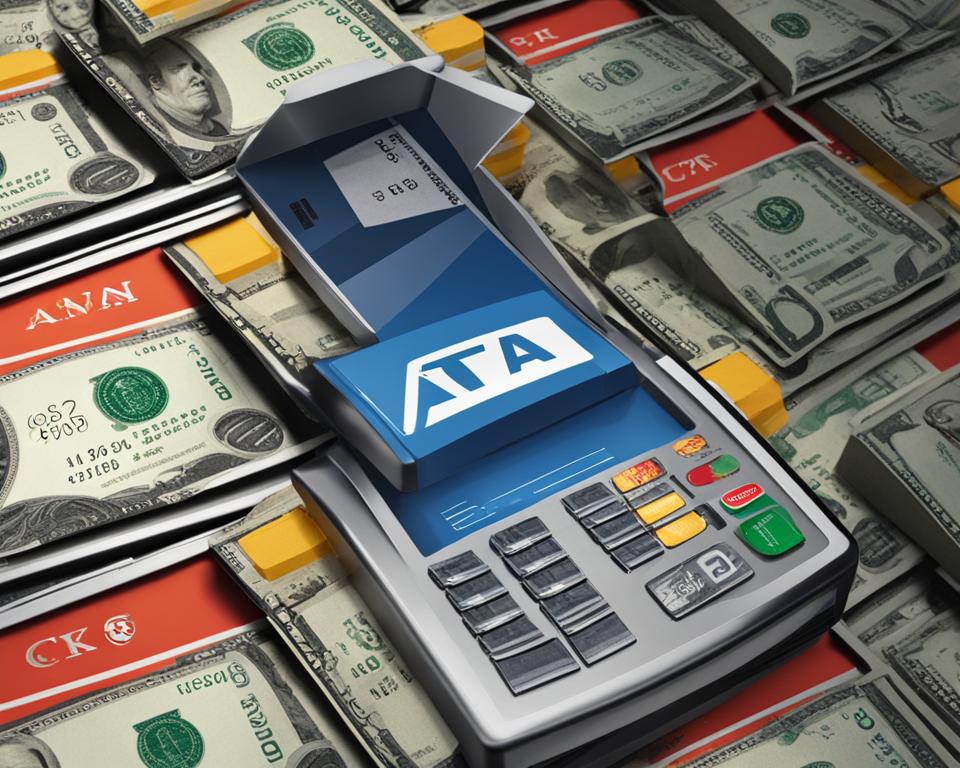
The Benefits of Avoiding Cash Advance Fees
Avoiding cash advance fees can help you save money and maintain better control over your finances. By eliminating these charges, you can access the cash you need without incurring additional costs that can impact your overall financial well-being.
“Finding a credit card that doesn’t charge cash advance fees and paying off the transaction promptly can be the key to accessing cash from your credit card without incurring unnecessary charges.”
Remember to review the terms and conditions of your credit card to ensure that there are no hidden fees or restrictions associated with cash advances. By being mindful of these details, you can make informed decisions regarding your credit card usage and maximize the benefits available to you.
How Can I Get Cash off My Credit Card Without a PIN?
If you find yourself without a PIN for your credit card, don’t worry, there are still options available to get cash from your card. One option is to visit a branch of your card-issuing bank in person and request a cash advance from a teller. The bank teller will guide you through the process and assist you in obtaining the cash you need.
Another option is to contact your credit card issuer and inquire about other methods of accessing your credit card funds without a PIN. Depending on the issuer, you may be able to request a check or a bank transfer from your credit card account. It’s important to note that the specific options and procedures may vary depending on the credit card issuer, so it’s best to reach out to them for guidance.
Although not having a PIN for your credit card may limit some of your options, visiting a bank branch or contacting your credit card issuer directly can help you find alternative ways to access cash from your credit card.
Can You Get Cash from a Store Credit Card?
When it comes to obtaining cash from a store credit card, it’s important to understand that not all store cards offer the option of cash advances. Cash advances allow cardholders to withdraw cash from their credit card account, similar to how it works with traditional credit cards.
Store credit cards typically have limitations when it comes to cash advances, so it is crucial to review the terms and conditions of the specific card to determine whether this feature is available. If the store credit card does offer cash advance options, you can access cash in a similar way to other credit cards.
“Not all store credit cards offer cash advances. Cardholders should carefully review the terms and conditions of their specific card to determine if cash advances are available.”
Once you have confirmed that your store credit card permits cash advances, you can use it at an ATM to withdraw cash. Keep in mind that cash advances often come with fees imposed by the credit card issuer, so it’s essential to consider the associated costs before deciding to take this route.
If you’re unsure whether your store credit card allows cash advances, contacting the card issuer’s customer service department is a reliable way to obtain accurate information. Representatives can provide you with the necessary details regarding cash advance capabilities and any related terms and conditions.
Store Credit Card Cash Advance Limitations
It’s important to note that even if your store credit card offers cash advances, there may be limitations on the amounts you can withdraw. The credit limit and available cash advance limits on store cards can vary, so it’s essential to be mindful of these limits to avoid exceeding them.
| Store Credit Card | Cash Advance Limit |
|---|---|
| Store Card A | $500 |
| Store Card B | $1,000 |
| Store Card C | $750 |
As seen in the table above, different store credit cards may have varying cash advance limits. These limits should be carefully considered to ensure you withdraw an amount that falls within your available cash advance limit.
Additionally, it’s crucial to understand that cash advances from store credit cards come with fees and interest rates that can be higher than those associated with regular purchases. Therefore, it’s generally advisable to explore alternative options and consider the potential costs and implications before deciding to use a store credit card for a cash advance.
In conclusion, while some store credit cards offer cash advance options, it’s important to thoroughly review the terms and conditions of your specific card to determine if this feature is available. Consider the associated fees and interest rates to make an informed decision about whether obtaining cash from your store credit card is the right choice for your financial needs.
Using your Card at the ATM: Things to Keep in Mind About Cash Advances
When using a credit card at an ATM for a cash advance, cardholders should be aware of the fees associated with the transaction. Cash advances often come with fees imposed by the credit card issuer and additional fees charged by the ATM. Interest rates for cash advances are typically higher than rates for regular purchases, and interest starts accruing immediately.
Cardholders should carefully review the terms and conditions of their credit card to understand the specific fees that may apply to cash advances. These fees can vary depending on the credit card issuer and the ATM used. It is important to consider these fees and the potential impact they may have on your overall financial situation before deciding to take a cash advance.
In addition to fees, it is crucial to understand the interest rates associated with cash advances. Interest rates for cash advances are typically higher than those for regular purchases. This means that borrowing cash through a credit card cash advance can be an expensive form of financing.
To illustrate the potential costs of cash advances, let’s take a look at an example:
| Credit Card | Cash Advance Fee | Interest Rate |
|---|---|---|
| Card A | 5% of the cash advance amount or $10, whichever is greater | 24.99% APR |
| Card B | 4% of the cash advance amount or $15, whichever is greater | 29.99% APR |
| Card C | 3% of the cash advance amount or $20, whichever is greater | 22.99% APR |
Note: The fees and interest rates mentioned here are hypothetical and only used for illustrative purposes. Please refer to the terms and conditions of your specific credit card for accurate information.
As shown in the table above, different credit cards may have varying cash advance fees and interest rates. These costs can add up quickly, especially if the cash advance is not paid off promptly. It’s essential to carefully consider the financial implications of taking a cash advance and explore alternative options if possible.
One alternative to consider is using a debit card instead of a credit card for cash withdrawals at an ATM. Debit card withdrawals typically do not incur cash advance fees or higher interest rates, making them a more cost-effective choice.
Another alternative is to explore other sources of funding, such as personal loans or borrowing money from friends or family members. These options might have lower fees and interest rates compared to credit card cash advances.
In conclusion, while cash advances using credit cards at ATMs may seem convenient, it is important to be aware of the associated fees and interest rates. Cardholders should carefully consider the costs and explore alternative options before opting for a cash advance. By making informed decisions, you can avoid unnecessary fees and potentially save money in the long run.
Conclusion
Using a credit card at an ATM for a cash advance may seem convenient, but it comes with significant drawbacks. The high fees and interest rates associated with cash advances make them an expensive way to access cash. Therefore, it is advisable to consider cash advances as a last resort and explore alternative options first.
Cardholders should be aware that cash advances start accruing interest immediately and often have no grace period. It is crucial to pay off cash advances as quickly as possible to avoid accumulating unnecessary debt.
Instead of relying on credit card cash advances, individuals can consider alternatives such as using a debit card for ATM withdrawals or utilizing payment apps that allow credit card transfers. Additionally, applying for a personal loan or borrowing from a trusted friend or family member can provide a more affordable solution in times of financial need.
Overall, while credit card cash advances can be a temporary solution, it is important to approach them with caution and be mindful of the associated fees and interest. Careful consideration and exploration of other options can help individuals make more informed financial decisions and avoid unnecessary debt.
FAQ
Can credit cards be used at ATMs?
Yes, credit cards can be used at ATMs to withdraw cash.
What is a cash advance?
A cash advance is when a cardholder withdraws money from an ATM using a credit card.
What should I consider before taking a cash advance?
Before taking a cash advance, consider the high interest rates, immediate accrual of interest, and one-time fees associated with the transaction.
Why are interest rates for cash advances higher?
Interest rates for cash advances are typically higher than rates for regular purchases to compensate for the increased risk.
Are there one-time fees for cash advances?
Yes, most credit card companies charge a one-time fee for each cash advance withdrawal.
Can cash advances have negative effects on credit scores?
Yes, cash advances can lower available credit and increase credit utilization, which may negatively impact credit scores.
How do I get a cash advance on a credit card?
To get a cash advance, insert your credit card into an ATM, enter your PIN, choose the cash withdrawal option, enter the desired amount, and complete the transaction.
What are alternatives to cash advances?
Alternatives to cash advances include using a debit card, payment apps like Venmo or Cash App, applying for a personal loan, or borrowing money from friends or family.
What should I keep in mind about cash advances?
Cash advances should be considered a last resort, paid off quickly, and alternative options should be explored. They may also have high fees and interest rates.
How can I get cash from a credit card without charges?
Look for a credit card with no cash advance fees and pay off the transaction on the same day to minimize interest fees.
How can I get cash off my credit card without a PIN?
Visit a branch of your card-issuing bank in person to request a cash advance from a teller, or explore other options like requesting a check or bank transfer from your issuer.
Can I get cash from a store credit card?
It depends on the specific store credit card. Not all store cards offer cash advance options, so it’s important to check the card’s terms and conditions.
What should I keep in mind when using my credit card at an ATM for a cash advance?
Be aware of the fees associated with the transaction, including fees imposed by the credit card issuer and additional fees charged by the ATM. Also, remember that interest starts accruing immediately.
What is the bottom line regarding cash advances?
Cash advances should be used as a last resort due to their high fees and interest rates. Explore alternative options and aim to pay off cash advances quickly to avoid accumulating debt.
Is there a way to get cash from a credit card without incurring fees?
The best way to minimize fees when getting cash from a credit card is to find a card with no cash advance fees and pay off the transaction on the same day.
Can you get cash from a credit card without a PIN?
Yes, you can still get cash from a credit card without a PIN by visiting a branch of your card-issuing bank in person and requesting a cash advance from a teller.
Can you get cash from a store credit card?
Cash advances from store credit cards are only possible if the card offers cash advance options. It’s important to check the terms and conditions of the specific store card.
What should I keep in mind about using my card at the ATM for cash advances?
When using a credit card at an ATM for a cash advance, be aware of the fees associated with the transaction, such as fees imposed by the credit card issuer and additional fees charged by the ATM. Also, remember that interest rates for cash advances are typically higher than rates for regular purchases and interest starts accruing immediately.
What is the conclusion about using credit cards at ATMs for cash advances?
Using credit cards at ATMs for cash advances should be considered a last resort due to high fees and interest rates. It’s important to explore alternative options and pay off cash advances quickly to avoid accumulating debt.
